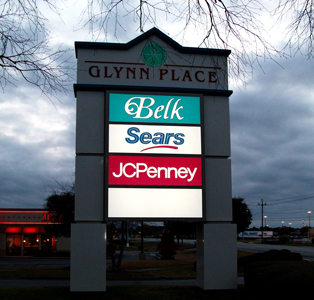Last issue, I pointed out the considerations that had to be made for channel letters when updating from neon to LED. Now I want to focus on another LED retrofit option—fluorescent sign cabinets.
First, as most of you know, fluorescent lamps are powered by a ballast and LED modules by a transformer, so typically the power supplies will have to be changed out as part of your quotation/work.
Next the LED options for this type of swap-out are numerous, and I feel obligated to offer the following advice: “Buyer Beware.”
Why, you might ask? Well let’s look at the more popular methods using LED for this type of scenario: CLM (channel letter module), LED grid systems, and indirect.
A real need-to-know point is comparing the lumens (lm) rating of actual fluorescent (FL) lamps with LED, as FL is a radial source of illumination. This means there’s a large amount of light bounced off the inside of the cabinet surfaces; thus the lumens are reduced each time they “bounce.”
On the other hand, LEDs are typically mounted where the light is direct. Here a majority of the illumination goes directly to the face.
Indirect options allow for the light to travel across the face. Care must be given if the face is pan and/or embossed, as indirect light will affect the appearance of both these types of faces.
Next you need to understand that sign cabinets are typically single-face (S/F) or double-face (D/F). However the LED solution from different vendors can be S/F, which will require doubling with back-to-back for a D/F application. Or you can opt to use a true D/F LED solution.
D/F sign cabinets are typically outside-mounted or center pole-mounted. The center pole has to be taken into consideration for any D/F LED option, as distance from the face to the LED can be critical. You also have to account for its overall dimensions, as the LED light can only travel effectively for certain lengths.
You’ll find LED tubes resembling fluorescent lamps. Some use the FL lamp sockets for positioning, but they’re typically not of the LED power.
Actual FL-type LED tubes are technically directional more than fully radial, but they’re still point sources, so working depth is critical.

Very few direct LED cabinet solutions can offer working depths shallower than 5 inches on average, yet some do offer depths as shallow as 2-1/4 inches. So you need to research your LED partner. Some offer certain depths, but only if the face is pigmented color (not white) or if it has a graphic image. It’s critical that you understand this so you can offer the right solution to your clients.
Another quick note is brightness. You have to determine if the LED retrofit choice needs to meet or exceed the brightness or if it’s acceptable with less brightness.
Lumen options vary wildly from different vendors, so make sure the lm rating is per face, as some vendors specify the lm number times two if it is for D/F (again, “buyer beware”).
In closing, it’s you who has to put everything here into perspective. You have to determine what your goals are and the liability (or lack of liability) you want to have, because there are just so many solutions.
After all, you are the one who is on the line with your customer.
By Fritz Meyne, vice president of Sales at LED lighting solutions provider Bitro Group, Inc.
All photos: Bitro Group.











